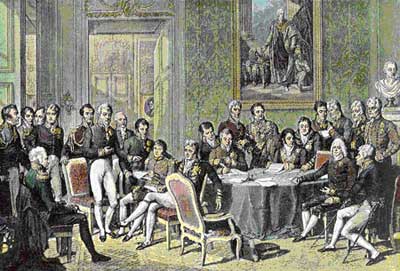Interested in knowing about the major historical events that have made Austria a nation? Find out as we trace back the timeline to give you a brief history of Austria.
The nation of Austria has a long and colorful and sometimes painful historical record. The country that now stands as the Republic of Austria has seen the good times as well as the bad. It has been through various stages and phases of turmoil and warfare as well as progress.
The history of Austria actually dates back to prehistoric times when it was inhabited and over run by different tribes. The Celts, Vandals and Romans are amongst the many tribes that have set foot on the lands of Austria. The country now known as Austria once existed as a part of the Roman Empire for several centuries. The fate of Austria began to change after the Roman Empire collapsed in the fifth century.
The collapse of the Roman Empire paved the way for further invasions. By the 8th century Charles the Great attacked and conquered Austria. He is known to have been a great patron of Christianization and colonization. The territories that came under the rule of Charles the Great were then later bequeathed to the House of Babenberg.
The interesting thing to notice is that the name Austria is not to be found in the written records that exist prior to this period. The first ever written records that show the name Austria belong to the above mentioned time period. It is to be found in the documents describing the Babenberg March.
The Habsburgs took over the dying Babenberg line round about the 13th century. The Habsburgs house remained the ruling party of Austria up until the end of the First World War. Since the Habsburgs ruled the country for such a long time they managed to have a big impact on the cultural development of Austria. Their influences are obvious in the art and architecture that the nation has to display.
It was under the Habsburgs rule that Austria began to experience massive expansion. The Habsburgs married with other royal families of the world bringing in different territories into the Austrian Empire. It was during this era that Austria became the breeding ground for some of the most talented artists and musicians that the world has ever seen.
The end of monarchy and the birth of the Republic
The Holy Roman Empire came to an end with Napoleon’s victory over the Austrian forces in 1806. The Austro-Hungarian Empire came into existence by the middle of the 19th century. It included German, Serbian, Czech and other lands that made it one of the central powers of the time.
The Austro-Hungarian Empire collapsed after the First World War after which monarchy came to a complete end and Austria became a Republic in 1918. In 1938 Austria was forced to submit to the German Third Reich. Then in 1945 Austria was again declared as a republic due to the victory of the allies over Germany.
It was after the declaration of 1945 that the land of Austria was constitutionally secured. From then onwards Austria declared its intentions to exist as a permanent neutral country and till date exists according to those principles. In 1995 Austria acceded to the European Union.





